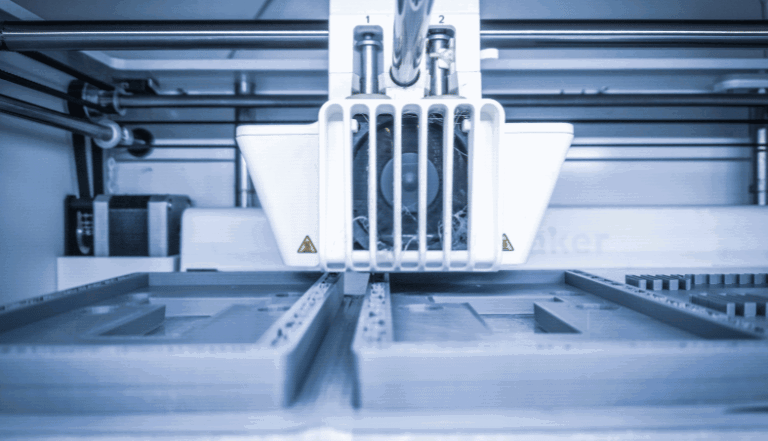Additive Manufacturing (AM), also referred to as 3D Printing, is a technology which has its origins in the late 1980s, when Dr Hideo Kadama filed what is generally considered to be the first AM patent application for a “Stereoscopic Figure Drawing Device”. These days, 3D printers can be found in universities, schools and even in the home, and AM seems to have found applications in almost every corner of technology.
Just a few examples of these applications have been in the UK news over the last month or so, five of which are discussed below.
Nottingham team to bring additive manufacturing into medtech
The Engineer, 12 January 2023
A team of researchers at Nottingham University have won a £6m grant to develop exciting new medtech devices using AM, according to The Engineer website. The aim is to produce a “toolkit” for 3D printing that will “act as an instruction manual to improve the pathway from research through to development and clinical adoption”.
As explained by Professor in Chemical Engineering Ricky Wildman, the toolkit will be designed to integrate “a combination of experimental screening, computational models, and machine learning to smooth the path from ‘Here is my product idea’ to ‘What materials do I need and how to I put them together?’, and finally, ‘This design is the most optimal’. The toolkit enables users to manufacture, guide and speed up all the steps that are needed to be able to put together a device or therapy.”
In developing this toolkit, the Nottingham team will focus on three devices: a “biopill” containing responsive polymers, which can be triggered to release peptides once in the body; an intestinal patch designed to repair damaged intestinal lining using cells and tissue; and “mini enzyme based ‘reactors’”, able to produce highly specific medicines.
Babcock produces first 3D metal parts for UK’s armoured fleets
army-technology.com, 13 January 2023
In a UK first, Babcock International Group, a UK Ministry of Defence supplier, has produced metal 3D printed parts which will extend the life of the UK armed force’s armoured vehicles, according to Army-Technology.com.
The steel components have been fitted onto the periscope systems of in-service Titan and Trojan vehicle fleets. The use of AM for these parts will enable Babcock to print replacement parts in just days, as and when they are needed.
“This ability to rapidly manufacture parts will allow our equipment to rapidly deploy on operations, and to stay in the fight for longer” said HQ Field Army assistant chief of staff for equipment brigadier Phil Prosser. “This is battle winning activity and we are committed to this collaboration and will continue to learn at this impressive pace.”
Mythos introduces 3D printed Ti bike stem
metal-am.com, 2 February 2023
Metal-AM.com reports that Derbyshire-based company Mythos have launched the IXO - an additively manufactured titanium bike stem for mountain bikes. According to the Mythos website, the IXO – which is made from aerospace grade titanium – is 16% stiffer in torsion and 11% stiffer in bending compared with an equivalent alloy stem.
The IXO is manufactured using Electron Beam Melting (EBM®) additive manufacturing, in which a metal powder or metal wire is heated under vacuum by an electron beam and fused together.
The stem is produced by Metron, also based in Derbyshire.
3D-printed antennas developed by EEE researchers could bring 5G and 6G to remote communities | Electronic and Electrical Engineering
The University of Sheffield, 13 January 2023
At the University of Sheffield, researchers in the Department of Electronic and Electrical Engineering have been working on 3D printed radio antennas, designed to be used in remote areas around the world.
Using 3D printing means that the antennas are quicker and cheaper to produce than those conventionally used, while still providing the same performance. The team at Sheffield believe that these innovative antennas, which use silver nanoparticles, will bring faster access to 5G and 6G technologies, at a fraction of the cost.
Preserving endangered languages as 3D shapes
UCL, 25 January 2023
A novel use of Additive Manufacturing has been explored by an anthropologist and an architect at University College London (UCL). Looking at ways to preserve endangered and rare languages, such as the Amazonian language Tariana, these scientists looked at how the structure of a language can be represented in 3D, using software developed for game, film and video animation. From these digital images, they printed 3D objects, enabling the preservation of a language in solid form.
These complex and often beautiful structures, made via Multi Jet Fusion, have the ability to bring ancient languages to life for future generations.
Helping to drive the development and adoption of AM technology in the UK is Additive Manufacturing UK (AMUK), the UK's trade association for companies who develop, create or sell the technology, materials or services which form the AM capability chain. AMUK is run in partnership with the Manufacturing Technologies Association (MTA).
According to AMUK, it is estimated that the UK can win up to 8% or £5bn of the rapidly growing AM global market, which is forecast to reach £69bn by 2025. Aimed at helping businesses thrive, AMUK offers a range of services to its members, focussing on the areas of Business Support, Business Intelligence and Business Promotion. As part of its Business Intelligence service, AMUK hosts a six-monthly membership forum, where members have the opportunity to come together and learn about the most up to date information within the Additive technology sector. The next forum is on 8 March 2023, and will be held at Renishaw’s New Mills facility in Gloucestershire.
It is fascinating to see the breadth of AM applications in the UK today, and we look forward to hearing the latest updates in the sector from the next AMUK forum. From medtech to transport, and consumer goods to electronics (and even anthropology), Additive Manufacturing demonstrably has the capacity to disrupt conventional business models and transform how we think about design and manufacturing.



